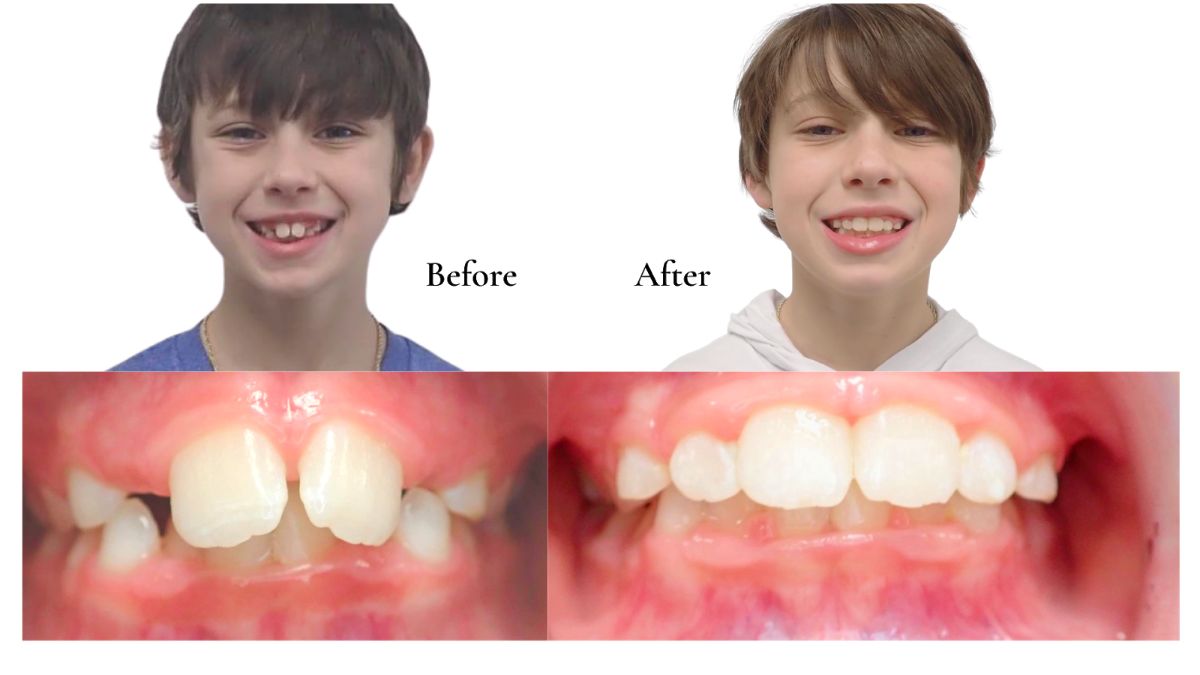As a parent in Chattanooga, we understand that you want the best for your child. That includes healthy teeth and a beautiful smile. Being proactive can provide a head-start on achieving those goals. Many parents find themselves questioning what age their child should see an orthodontist. The American Association of Orthodontists recommends children come to their first Orthodontics consult at the age of 7. 7 years old may seem young, but there are several reasons why it’s helpful to start the process at this age.
Early Check Up
At around the age of 7, jaw growth and adult tooth development are enough to begin showing subtle signs of any possible abnormalities. An early checkup, including x-rays and a thorough exam by a board-certified orthodontist can be important in catching and avoiding complications in the long run.
Care Planning
9 times out of 10, this early check-up will reveal that your child’s teeth and bite are fine, and intervention isn’t necessary. You will leave the orthodontist’s office with the child in a state of observation that can last from a couple months up to several years as their teeth and bones continue to develop. During this time, the orthodontist will keep track of developmental progression and will identify the perfect time to begin treatment according to your child’s care plan.
Choosing the best time for treatment depends on several different factors and requires expert and complex knowledge in craniofacial growth and development.
While the age that kids get braces will vary, orthodontic treatment most often begins between the ages of 9 and 14. Some orthodontic problems are easier to correct if they’re treated early.
If Dr. Twomley thinks your child will benefit from treatment, he’ll let you know when will be the best time to get started.
He will also coordinate carefully with your pediatric dentist, and any other specialist that may be involved, to develop a seamless, effective complete dental care plan.
Early Treatment (Phase 1)
In the event that your orthodontist notices a potential issue with dental development, there are several interventions that can help guide their smile while they wait for full treatment.
This preventative care is called Phase 1 or Early Treatment. Early treatment helps to prevent or intercept more serious problems from developing and may make treatment at a later age shorter and less complicated.
Early intervention may not be possible once the face and jaws have completely developed at around 14-15 years old. Therefore, if there’s an interest in braces and the child is already in their teens, it’s very important to at least have a free exam by an orthodontic specialist as soon as possible.
Reasons for early intervention
Some of the instances in which phase 1 may be encouraged include:
- In order to guide jaw growth. Narrow palates, overbites and underbites are examples of problems that can all be gently guided during early growth instead of less ideal methods later in life.
- To lower the risk of trauma to protruded front teeth. When uneven jaw growth and overjet cause the lips and teeth to poke outward, there is an increased chance that mouth injury can occur, especially during sports.
- Correcting harmful oral habits. When children can’t kick habits such as thumb sucking on their own. There are custom appliances that your orthodontist can provide to help along the process. This is actually something that we frequently help older teens and adults with as well.
- To help improve the appearance and self-esteem in your child. Sometimes, at a certain age kids begin to suffer from self-consciousness regarding less than perfect smiles. Hopefully teasing and bullying aren’t involved, but it does happen. Looking better is a valid reason for seeking out early treatment instead of feeling embarrassed for the months or years spent waiting for orthodontic care. It’s amazing how much a limited round of braces can do for improving confidence in a young smile.
- Guiding permanent teeth into a more favorable position as they emerge. If the x-ray shows an adult tooth coming in at an odd angle or being blocked by a stubborn baby tooth, phase 1 can help correct the pathway and avoid crowding.
- To create a more pleasing arrangement of teeth, lips and face. Orthodontics doesn’t just help the teeth look better. The orientation of the jaws and teeth can greatly affect the structure of the lips, ratios of the profile and the overall look of the face.

Examples of Early Treatment
Expander- A device which assists the palate growth to ensure accommodation of all adult teeth, preventing crowding, crossbites, impacted teeth and possible need for extractions later on. Expanders work best in childhood when the skeleton is still developing so this tool, in particular, requires early assessment.
(Phase 1) Extraction- A procedure, performed by your dentist or oral surgeon, to remove a residual primary tooth to make space for an adult tooth to emerge.
Early limited braces- A partial set of brackets to accomodate a child’s mixed dentition (“baby” and “adult” teeth at the same time.)
Retainer- A removable device to keep teeth in ideal position.
Signs Early Intervention May Be Needed
As a parent, there are some red flags to look out for that can indicate your child may benefit from Phase 1 orthodontic care.
- Early or late loss of baby teeth
- Difficulty chewing or biting
- Breathing through the mouth
- Thumb-sucking
- Crowded, misplaced or blocked-out teeth
- Jaws that are too far forward or back
- Biting the cheek or biting into the roof of the mouth
- Protruding teeth
- Upper and lower teeth that don’t meet, or meet in an abnormal way
- An unbalanced facial appearance
- Grinding or clenching of the teeth
These signs can be helpful clues that your child needs early orthodontic attention. However, it’s not always easy to tell when your child has dental abnormalities. Even teeth that look straight may be hiding a problem bite that wouldn’t be noticeable to someone without specialist knowledge.
A good orthodontist appreciates the opportunity to examine a child early in order to be as thorough and precise as possible when designing a care plan for them. It is so important in helping him to make treatment as efficient as possible.




